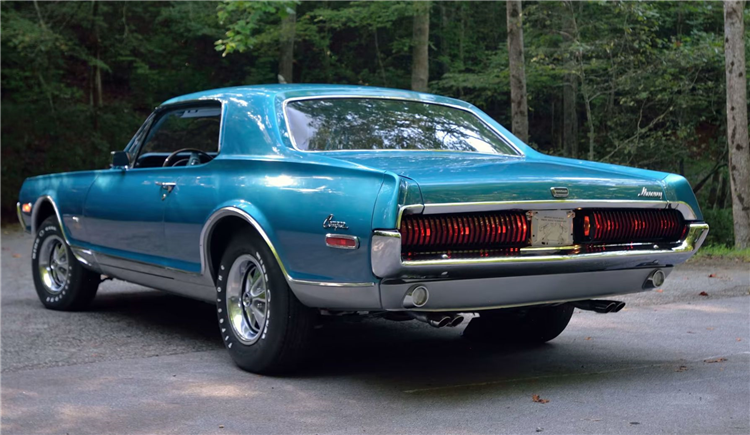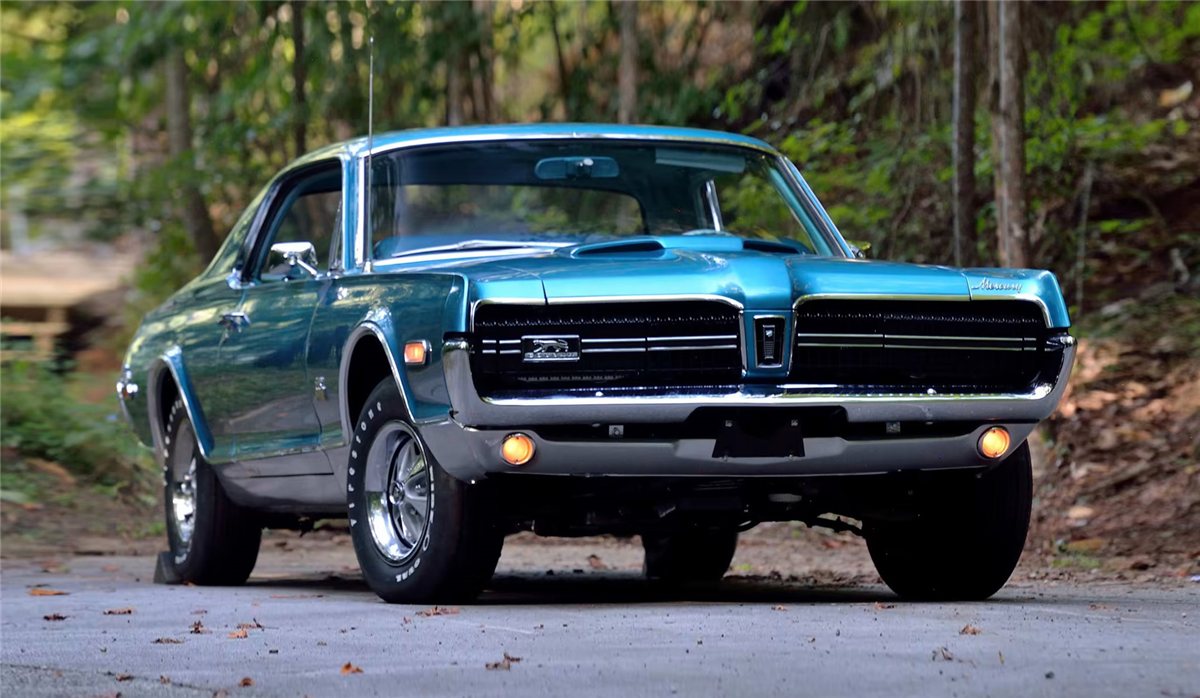The Cougar became one of the most potent and opulent cars of the early muscle car period in 1968 when Mercury unveiled the GT-E package. The Mustang was a revolutionary vehicle when it was presented by Ford in April 1964 at the New York World’s Fair. The Mustang helped create the pony car, a new market segment that quickly became the most well-liked, with its beautiful, European GT-inspired look, an affordable price, and a variety of available extras. Years of record-breaking sales for the ‘Stang led Ford’s Lincoln-Mercury to adopt the popular pony car formula for its own model.
Heavily based on the Mustang but boasting distinct features and a more upscale vibe, the Mercury Cougar hit the streets on September 30, 1966, as a 1967 model. Although it didn’t rival its Blue Oval-badged sibling in terms of sales, the new upscale pony car was a resounding success, accounting for nearly 40% of Lincoln Mercury sales for the 1967 model year.
The need for a more menacing cat

The Cougar carried over the entire engine selection of the Mustang during its initial year on the market and was offered in standard or the even more premium XR-7 trim. Similar to the Mustang, both vehicles could be fitted with the GT package, which provided mechanical and aesthetic modifications, including a 325-hp, 390-ci (6.4-liter) “Marauder” V8. Mercury understood it needed to provide a more potent V8 for the 1968 Cougar since Detroit’s Big Three were involved in a horsepower war that introduced ever-more potent engines to most model lines.
Due to this, the GT-E package was introduced in the middle of the model year, quenching consumers’ hunger for performance and elevating the mildly revised 1968 Cougar to the level of exclusivity that it could compete with Europe’s priciest grand tourers.
The GT-E package
The GT-E package, available for both the regular and the XR-7 Cougar, included almost all of Mercury’s optional extras. Mechanically, it had the Super Competition Handling Package, which included power front disc brakes, a power booster engine fan, and stronger suspension than the GT’s. A custom front grille with blacked-out vertical bars, a power-dome hood with fake dual intakes, special body side moldings, and chrome quad exhaust outlets were added by the GT-E package.
Additionally, the package added an exclusive two-tone paint scheme (though buyers could still opt for a single tone) with 11 upper-body choices, “7.0-litre” badges, and bucket seats wrapped in leather and vinyl. The package also included a so-called engine dress-up kit that replaced the standard rocker covers, radiator cap, oil filler cap, dipstick, and air filter housing with chrome versions. But, by far, the most exciting feature of the GT-E package was the mighty 427-ci (7.0-liter) V8.
The legendary 427 side oiler

For those who are unfamiliar, the 427 (made in a variety of combinations) was the FE engine family member with the highest performance. It provided the winning GT40 Mk IIs at Le Mans and other Fords that were built for competition. The most potent Shelby Cobras were powered by the street-legal 427 “side oiler” engine, so named for the oiling route that was on the bottom side of the block.
Although the low-riser used in the 1968 Cougar GT-E performed less well than the high-riser used in the Cobra, it was still capable of producing 390 horsepower and 460 lb-ft (625 Nm) of torque. This ferocious V8 combined with a C6 Merc-O-Matic three-speed automatic to create the 1968 GT-E, the most potent Cougar ever constructed that was commercially available. But the GT-E’s basic engine was replaced by the more recent 335-hp 428 Cobra Jet from May 1968 through the end of the model year.
Luxurious, powerful, but also insanely expensive
Customers had to fork over an additional $1,311 to purchase a 1968 Cougar GT-E with the 427 engine. The GT-E package raised the base price of the car from $2,933 for the regular Cougar to $4,244 for the XR-7 (nearly $37,000 in today’s dollars). The GT-E package was more expensive than Mopar’s HEMI engine package, which helps put things into perspective.
As a result, Mercury only sold 394 GT-E Cougars before discontinuing the package at the end of the model year. The most effective engine (428 Cobra Jet) was offered in the brand-new, performance-focused Eliminator trim for 1969.
The 427-powered Cougar GT-E 55 years later
Of the 394 cats sold with the GT-E package, 357 came with the potent 427 engine. Because few units were produced and even fewer have survived, these days, the 1968 Cougar GT-E 427 is highly sought-after. A surviving unit in pristine shape rarely pops up at auction, but when it does, it demands six-figure bids.
Fifty-five years after it was unleashed on public roads, the 1968 Cougar GT-E remains one of the rarest, most potent models built during the muscle car golden age.
